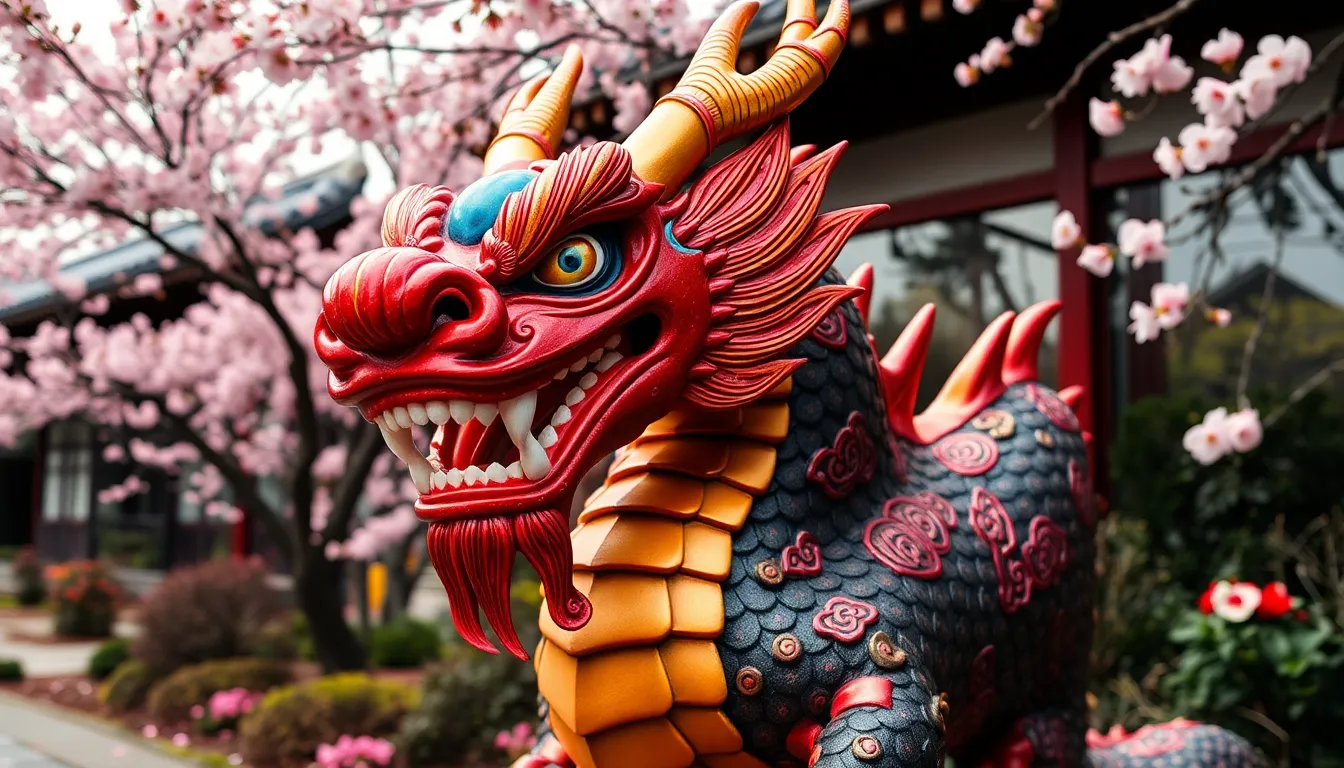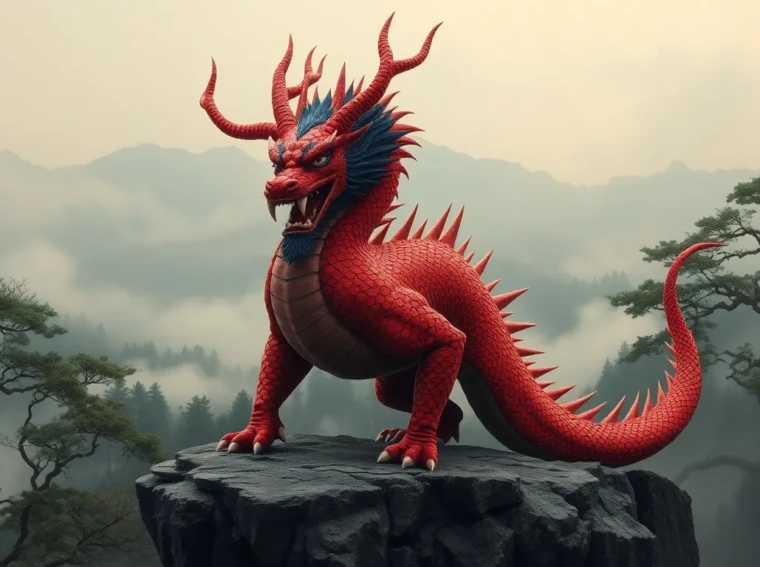In Japanese folklore, the oni dragon stands out as a captivating fusion of myth and legend. These fearsome creatures, often depicted with fierce horns and vibrant scales, embody both the chaos of nature and the complexities of human emotion. As guardians of the spirit world, oni dragons evoke a sense of awe and reverence, making them a popular subject in art and literature.
Exploring the oni dragon’s origins and significance reveals a rich tapestry of cultural meaning. From ancient tales to modern interpretations, these mythical beings continue to inspire fascination and curiosity. Delving into their lore uncovers not just the stories of these dragons but also the values and beliefs of the societies that created them.
What Is an Oni Dragon?
An oni dragon is a mythical creature rooted in Japanese folklore, embodying characteristics from various legendary beings. Oni dragons possess fearsome horns and striking, multi-colored scales, representing both strength and temperament. These entities symbolize the chaotic forces of nature and the intricate spectrum of human emotions.
Oni dragons are often depicted as guardians of the spirit world. They ensure the balance between the realms of the living and the dead, showcasing their dual role as protectors and destroyers. These dragons serve as reminders of the natural world’s power, often evoking feelings of both fear and reverence in those who encounter their stories.
Their origin can be traced back to ancient myths, evolving over centuries to reflect societal beliefs and values. In various art forms, oni dragons illustrate the rich tapestry of Japanese culture, frequently appearing in literature, theater, and visual arts. These representations highlight their continued relevance in contemporary discussions around mythology and cultural identity.
Oni Dragon

Oni dragons, rooted in Japanese folklore, embody a complex narrative that intertwines history and art. Their evolution reflects significant cultural motifs that reveal the values of the societies that envisioned them.
Historical Context
Oni dragons trace their origins to ancient Japanese mythology, with the earliest references dating back to the Heian period (794-1185). They originated from the merging of various mythological influences, including Chinese dragons and native Japanese deities. Their depictions often vary, showcasing not only physical differences but also roles within folklore. Oni dragons transitioned from fierce adversaries to protective figures guiding spiritual journeys, illustrating societal shifts in the perception of chaos and order.
Cultural Significance
Oni dragons hold profound cultural significance as symbols of protection and transformation. They represent the duality of human emotions and nature’s unpredictability. In festivals like Setsubun, oni dragons appear as figures to be banished, symbolizing the expulsion of misfortune. Artistic representations, from ukiyo-e prints to modern anime, highlight their presence in both traditional and contemporary narratives. This versatility underscores their importance in shaping collective identity while reinforcing moral lessons, ultimately showcasing the resilience of Japanese cultural heritage.
Characteristics of Oni Dragons
Oni dragons exhibit distinctive features that reinforce their significance in mythology. These creatures possess captivating physical attributes and formidable abilities that shape their roles in folklore.
Physical Attributes
Oni dragons display prominent horns, often twisting and curling, symbolizing their fierce nature and power. Their scales shine in vibrant colors, frequently featuring hues of red, blue, or green, representing both chaos and vitality. Their eyes, often fierce and piercing, exhibit a mix of wisdom and ferocity. Large, muscular bodies convey strength, while elongated tails hint at agility. Some depictions include additional features, such as multiple eyes or extra limbs, enhancing their mythical aura.
Abilities and Powers
Oni dragons possess various supernatural abilities that elevate their status within the spirit world. Mastery over elements, such as fire and water, allows them to influence natural phenomena. They exhibit shape-shifting skills, enabling them to transform into other beings or objects, often aiding in their protective role. Strength in enforcing spiritual balance manifests through their interactions with humans and spirits, often guiding lost souls. Some legends attribute the power of divination to these creatures, granting them insight into the future or hidden truths.
These attributes and powers not only shape the identities of oni dragons but also illustrate their role as symbols of protection, transformation, and the complex nature of existence within Japanese mythology.
Oni Dragons in Popular Culture
Oni dragons permeate popular culture, appearing in various forms across literature, films, and video games. Their compelling traits and deep-rooted symbolism resonate with audiences, ensuring their continuous relevance.
Literature and Film
Oni dragons frequently appear in both traditional and contemporary literature and film, serving as complex characters that embody chaos, guardianship, and transformation. In works like “The Tale of the Heike,” oni dragons symbolize the tumultuous nature of war and human emotion. Films such as “Spirited Away” and “House Moving Castle” portray oni dragons as powerful beings that navigate between realms, often challenging protagonists and guiding them toward personal growth. These representations reinforce themes of balance and duality, cementing their roles as significant figures in storytelling.
Video Games
Oni dragons feature prominently in many video games, where they often serve as formidable foes or powerful allies. Titles like “Okami” depict oni dragons as protectors of nature, showcasing their connection to Japanese folklore through intricate designs and abilities. In “Smite,” oni dragons become playable characters, allowing players to harness their elemental powers in combat. These portrayals highlight their adaptability and enduring appeal, engaging players with both historical significance and fantastical elements. Through these mediums, oni dragons continue to capture the imagination, illustrating their lasting impact on modern narratives.
Conclusion
Oni dragons remain a captivating element of Japanese folklore that bridges the ancient and modern worlds. Their dual nature as both fearsome creatures and protective figures illustrates the complexity of human emotions and the unpredictability of nature. As symbols of transformation and guardianship, oni dragons resonate deeply within cultural narratives, reflecting the values of the societies that revere them.
Their presence in various artistic forms and popular culture continues to inspire awe and intrigue, ensuring that these mythical beings remain relevant. Through stories and representations, oni dragons not only enrich the tapestry of Japanese mythology but also invite exploration of deeper themes like balance and duality in life.
